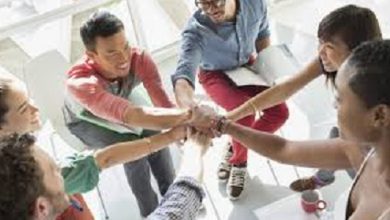What is Group Dynamics Elements importance and Examples
What are group dynamics
The term that characterizes this type of activity comes from the sociology degree. Group dynamics are activities in which people get involved to strengthen their relationships. This is how these have to do with contact, with the community, with society, with coexistence and with cooperation between the participants. Those in charge of applying the group dynamics will have to be aware of the behavior of the participants to direct them correctly during the course.
The professional who knows what Group Dynamics are and what they are for knows that, depending on the exercise and also those involved, the mechanics of development will vary. In the same way, the results and group ties that are created with the culmination will be conditioned by the circumstances and the people. This is how the conclusion is reached that this type of group dynamics has to be observed by an expert in the area.
For these reasons, these activities may suffer alterations if it is understood that the results and internal forces of the group are going to suffer a fairly noticeable improvement. Thus we could say that these exercises can be very variable and thanks to this they have become widely used practices thanks to their high capacity to adapt to different ages, situations or preferences.
Elements of group dynamics
The concept of group dynamics includes five main elements and additional ones. The main ones are:
- The group’s objectives . This element is defined by the more general system of practical work with people in which the group is included and, to a considerable extent, by the personal qualities of its leader. The group’s goals may not coincide with those of the individual participants. This generates a group dynamic whose results are not always predictable.
- Group norms , which arise as a result of the search for a common goal, the desire to maintain the stability of the group. The norms developed by the group are defended by its members. The group exerts pressure on its members, forcing them to obey these rules.
- Group structure and leadership issues . The leader directs the group, organizes, plans and manages the group’s activities, showing a higher level of activity than the rest of the group. The leader is a social role of a certain person in the group. The structure of the group can be revealed with the help of sociometry.
- Group cohesion is the mutual attraction of its members. It is necessary to provide a dynamic balance between cohesion and tension.
- Phases of group development . Several phases are usually distinguished; they are explained in the following section.
Objective of Group Dynamics
Due to the internal strength and unity that is achieved in the group that carries out the dynamic , cooperative skills can be acquired with which they can experience the motivation to improve more and more among themselves and with teamwork.
It is also known that the group can focus attention on achieving common goals, good for all members. In this way, productivity is contributed to the dynamics, promoting the work of each person individually and also as part of a community.
In addition to all this, group dynamics allow relationships to be established and a leadership position is created in tasks that are distributed with equal importance . Which means that each person will have the same responsibility as everyone else to allow the achievement of the proposed objectives. Thus, activities of this nature achieve equitable participation and ensure that everyone can understand the importance of all parties.
The importance of motivation at work
Motivation at work can be affected by personal issues, so this aspect should not be disregarded.
What cannot happen is a company thinking that if an employee is unmotivated, it is a problem that has to do exclusively with their own issues.
Organizational motivation, that is, the actions that the company takes to keep its employees motivated, are related to the creation of a suitable work environment.
We are talking about something that promotes well-being, improves the organizational climate and engages professionals with their tasks and with the company in general.
All this should be valued, because motivation at work contributes to:
- increase employee confidence ― a change that makes professionals feel more confident to perform their duties and deal with challenges common to their work routine;
- promoting personal growth ― trust makes employees more comfortable performing their jobs, as well as visualizing ways to direct their careers. Something that can transform professionals into even more valuable pieces for the company;
- optimize the use of time ― motivation is also related to productivity . Motivated workers tend to perform their duties more skillfully and the time gain is usually positive for the company’s results;
- Improve interpersonal relationships — Motivated employees feel good about themselves and contribute to a more positive organizational climate. This means, among other things, that in this reality the relationship between team members tends to become lighter and more positive;
- optimize teamwork ― as it would be, if employees relate to each other in a more positive way, the synergy between them increases and, consequently, their performance in teamwork as well.
Tips to succeed in group job interviews
If you attend any group dynamics, it is important that you take into account the aspects that we mention below:
1-Express your point of view
You can argue, reason, defend your position on a specific issue, but without losing your temper or incurring disrespect that will never lead to anything positive.
2-See the group as potential companions
All the people who attend these group dynamics are people you can lean on. You should not see them as “enemies”, but as allies. Recruiters will positively value your camaraderie and ability to work as a team. In short, look more for the progress of the group than for your personal brilliance.
3-Have initiative and be participatory
Normally, the jobs in which group dynamics are carried out are usually closely related to customer service and daily dealings with the public. Therefore, it is important to “break the ice.” In this way, you will demonstrate to recruiters that you are a person with initiative and with the necessary ability to resolve conflicts, when they exist.
4-Learn to listen and don’t interrupt
It is as important to speak as it is to listen. You have to learn to express your own ideas, but also to listen to the opinions of the rest of the candidates. In this way, you will demonstrate that you have the capacity to learn and that you do not insist that your arguments are always the best.
5-Find the balance
You must know how to find the balance between talking a lot and little. In the medium term is virtue. If you appear passive, you may convey the feeling of having little involvement with the job opportunity and, for this reason alone, our application may be rejected. But if you talk too much it could be interpreted as an invasive or hoarding attitude, so you have to find a balance.
6-Always present in a coherent order
When your turn comes, it is important that you mentally have a scheme to follow. This way you can talk about everything you have in mind without leaving anything behind. Furthermore, following a logical order conveys security and conviction in what you want to express.
On the other hand, other aspects – no less important – in group dynamics are presence and punctuality . Regarding the second, you should always try to arrive a few minutes before the time at which you are scheduled; This way you will ensure that there is no last minute problem that could play tricks on us.
Furthermore, presence is a fundamental pillar. You must come with the appropriate clothing, well groomed and avoid accessories such as a cap to the interview – it is a bit obvious but it is not bad to remember – or with rings and jewelry that may be too extravagant.
Examples of group dynamics
1-Conflict resolution dynamics
In this type of dynamics, recruiters can check the candidates’ abilities when making decisions. They are also of great help in assessing the leadership and teamwork capacity of each participant.
2-Brainstorming
This dynamic can begin by posing a challenge to the candidates, who must contribute ideas throughout the process. It may be about a real case that they could encounter if they become part of the company. In this way, recruiters can assess whether they master this field and whether they are able to take advantage of the ideas of others to develop their own.
3-Debate or round table
This modality has a moderator from the company, who suggests a topic and gives the participants a turn to speak. These types of dynamics are useful to see how the candidates express themselves, how they show their position while respecting that of the opponent, how alliances or groups emerge between them, etc.




